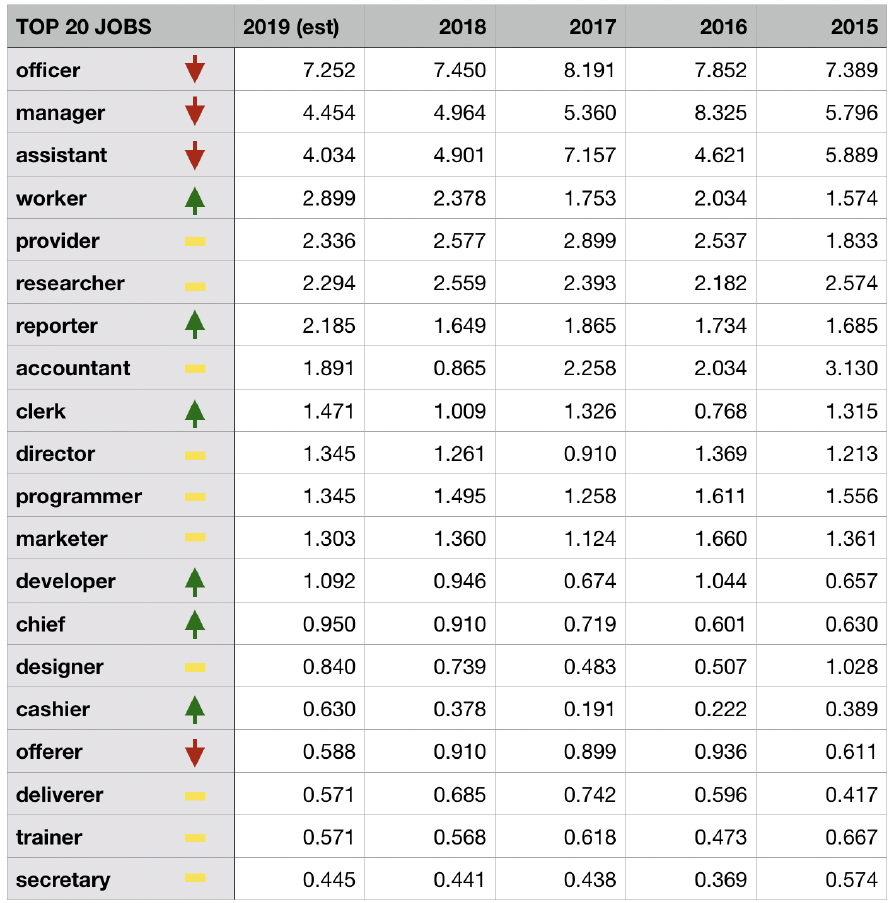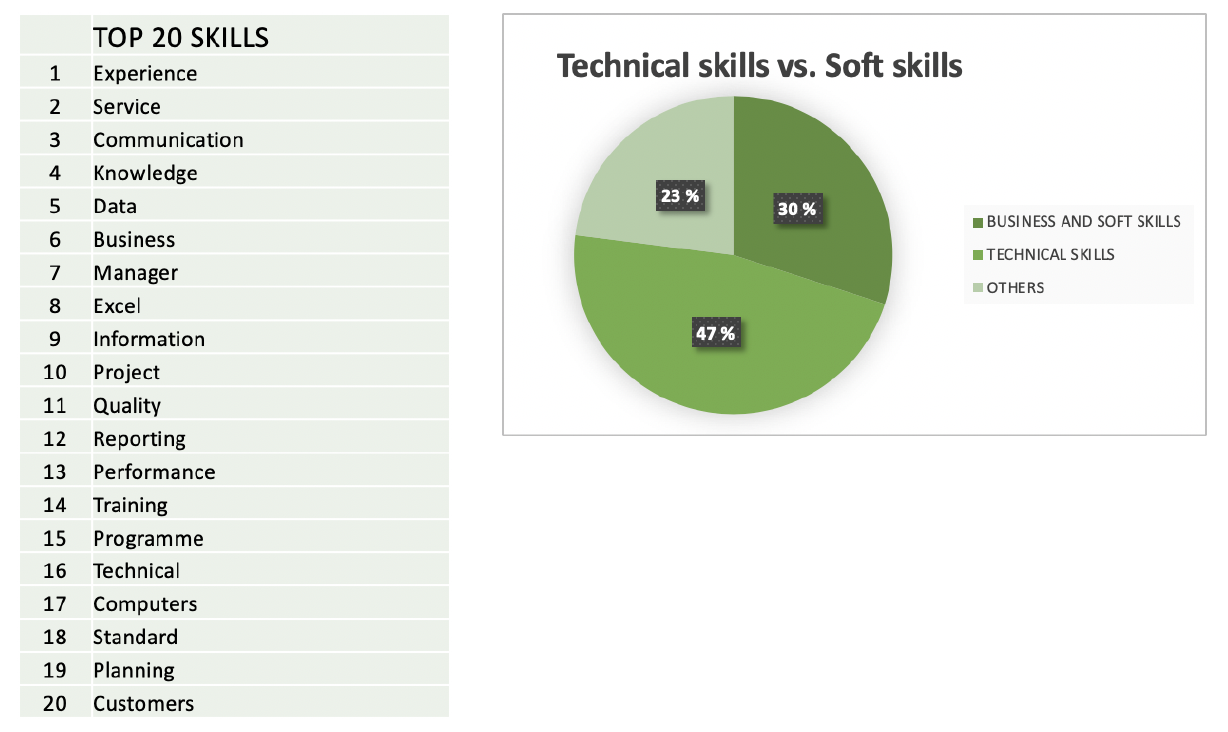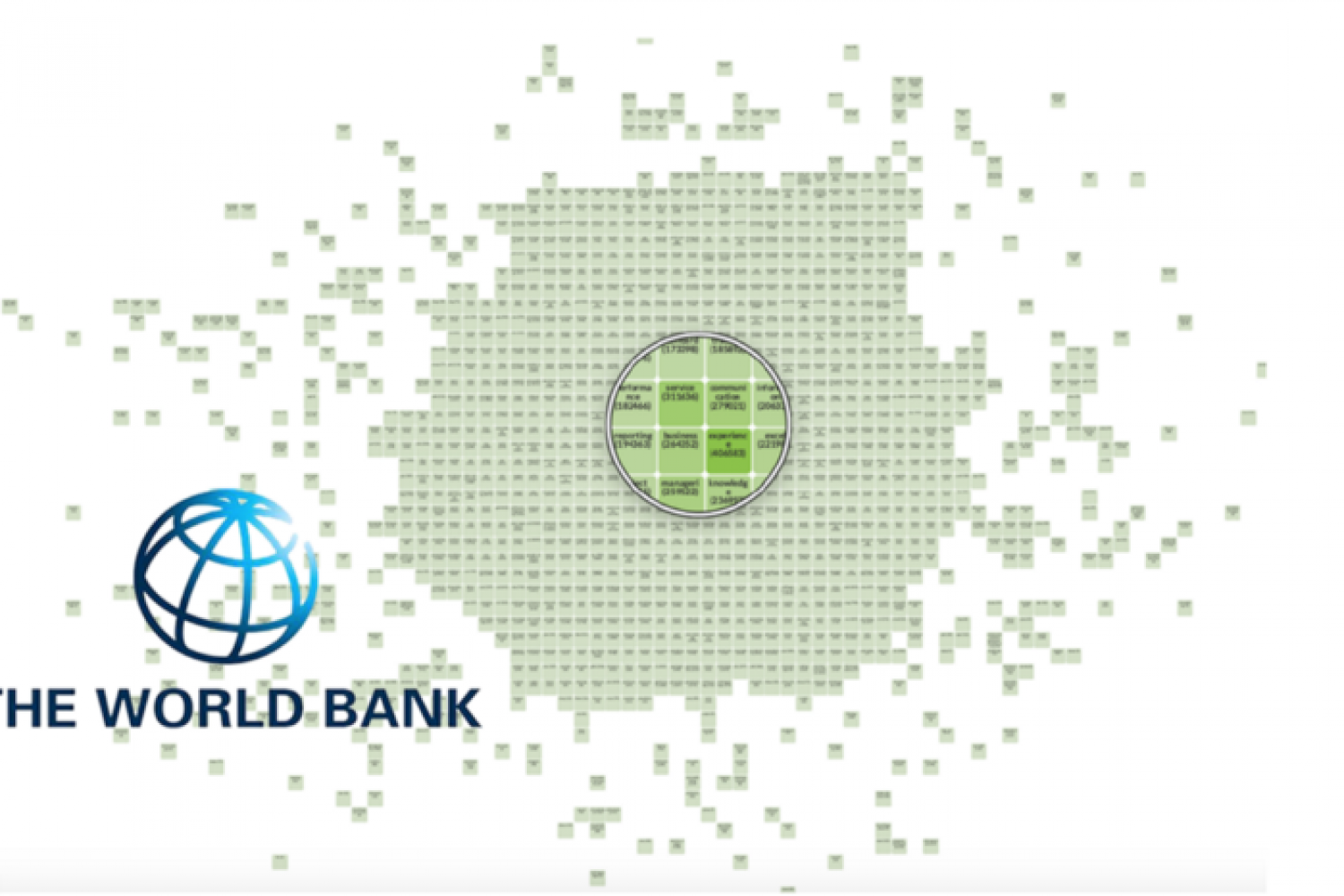60.000 Kenyan job advertisements and 2 university curriculums were analyzed with AI to give insights into the skills need in labor markets and possible curriculum gaps.
This analysis will be a great input for upcoming projects, focusing on digital skills development in Africa, to exactly show the digital skills demand in the continent and prepare a demand-driven skills development interventions at scale.
– Saori Imaizumi, Education Specialist at the World Bank
The challenge and objectives
One of the toughest challenges in maintaining a labor market-relevant curriculum is to make sure that the curriculum can fill today’s working life needs and applies the same vocabulary as the employers and companies do. Most of the curriculums are written in an academic language. At the same time, curriculums and course descriptions fail to describe the skills that students can gain and present when searching for a job, especially through online job platforms.
Cognitive AI, Big Data and Natural Language Processing were brought together to build a real-time understanding of skills, competencies, knowledge and abilities that employers are looking for.
During 2019, Headai together with The World Bank did a labor market analysis and curriculum gap assessment using AI-analyzed big data in Kenya. The results, that were also visualized as 2D skills maps, enable:
- understanding what skills are needed now and in the near future;
- guiding up-to-date curriculum development;
- advising students on their course selection; and
- gaining understanding to improve the competitive offerings of universities.
Feedback from the customer
Saori Imaizumi, Education Specialist at the World Bank has done similar work in India using a local online job portal before. At that time, her team conducted the analysis manually which took a while. With an advancement of technology, she found that HeadAI’s tool was interesting to test to see how AI can automatically analyze labor market skills demand and identify the curriculum gap
As a result, she found both possibilities and limitations of the tool. For a quick analysis, the tool was useful to gain a curriculum gap insight. But in order to make sense from the analyzed data, we still needed human efforts. Along with the World Bank’s Digital Economy for Africa initiative, there will be more projects focusing on digital skills development in Africa. This analysis will be a great input for these projects to exactly show the digital skills demand in the continent and prepare a demand-driven skills development interventions at scale.
Data sources
The data used in the project can be divided into two sets: 1) the online job advertisement data (from three chosen job portals) for understanding the skills demand in Kenya, and 2) curriculum and educational offering in two Kenyan universities for understanding the skills offering. The job portals provided natural-language-based, unstructured textual data of open jobs in Kenya. The chosen period was a 5-year time frame between 2015 – 2019. The total amount of job descriptions read was about 60.000. As a result, AI-analysis gave an understanding of the skills demand during the period. Also, job titles and their trends were studied.


Headai Digital Twin enables predictive analysis and simulation
Headai uses the concept of Digital_Twin in order to build its dynamic knowledge graph about any language. In Headai’s methodology, Digital_Twin is a digital replica of the chosen (language-based) domain’s understanding (knowledge).
Headai’s Digital_Twin is built by using unsupervised (self-organizing) machine learning, which enables building always up-to-date and detailed language models in different contexts. Headai’s autonomous-learning artificial intelligence builds models itself and uses them to explain the world and make decisions (known as the third wave of artificial intelligence: https://lounge.fim.com/tekoaly/).
This language model was applied in the project to build a detailed and extremely flexible domain-specific Digital_Twins of job demand in Kenya and the two universities’ curriculums. Headai is also capable of building Digital_Twins on any learner, worker or trainer. The great thing is, that every Digi-twin is comparable with each other.

One way to call Headai AI’s understanding of skills is also an ‘ontology’. Basically, there are no big conceptual differences between the ontology and knowledge graph. While ontology is usually a hand-made subjective set of concepts and relations, a knowledge graph is a more detailed, and data-driven view on the same phenomena.
5 key actions found for developing the educational offering
The aim of this article is not to present the findings in skill-level details, but to sum up, the action points that were found by the universities after studying the results of the AI-analysis. Many of them were related to building better collaboration with companies that develop and utilize modern technologies. See the 5 key points:
1. Use of online courses to supplement curriculum gap: Computer Science is a big, rapidly changing field and no curriculum can match this dynamism. There is a need to encourage students to take online courses and universities can find many ways to support this.
2. Learners should be more strongly introduced to current computing fields including the latest trends like Cloud Computing, and Big Data, etc. This can be done through e.g. short courses, hackathons, and even workshops.
3. Partner with high profile computing companies to offer students internships and attachments to supplement the curriculum.
4. Encourage multi-disciplinary approaches to systematically develop students’ skills; work together to solve problems that cut across their areas.
5. Empower teaching staff with current trends in computing. This involves establishing a link between the teaching staff and the industries in the current computing fields.
AI is starting to take its place in educational development, and there’s more to come. The scalability of the technology gives us chance to use it across nations and continents to understand the dynamics of the skill’s economy. Why get stuck in guessing the right directions in educational development when we can use real-time data to monitor labor market needs?
The main source for this blog article: Ketamo, H. & Passi-Rauste, A. 2019. Headai together with The World Bank: Labor market analysis and curriculum gap assessment using big data in Kenya. Final report for the World Bank project.
Join the discussion in social media:
twitter.com/headaiofficial
linkedin.com/company/headai/
facebook.com/headaiofficial

